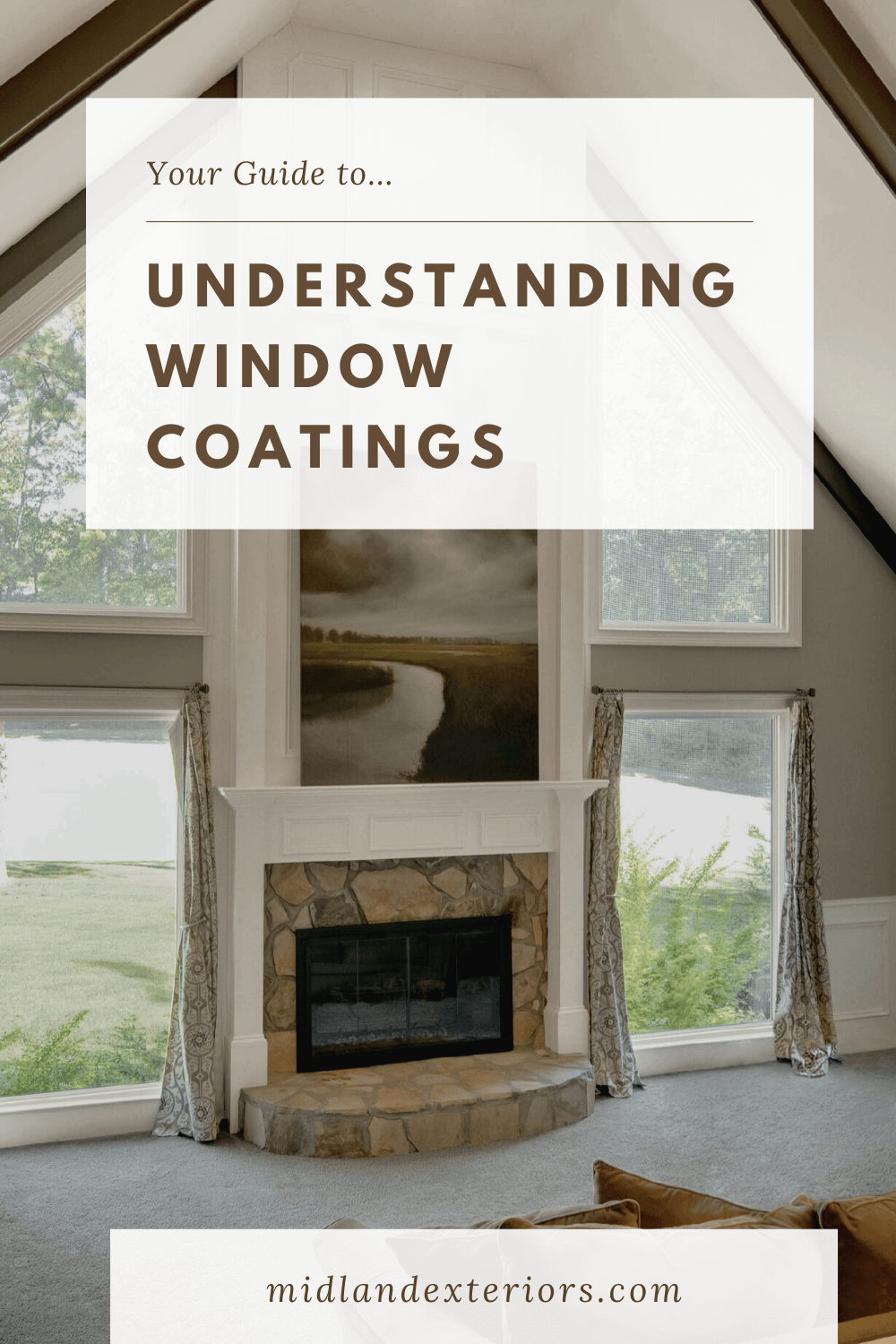Types of Window Coatings: What Works Best For Your Home

Replacement windows come with several decisions to make. Even after window material, style, finish, and hardware are chosen, an equally important decision is the glass panes in the window. The two primary decisions to make regarding window glass is the number of panes of glass and if you will put any coatings on the glass panes for added benefits. Let’s explore options available in these two categories so your choices can create a positive investment for your windows and meet the needs for your home’s environment.
Window Pane Options
The number of panes refers to the layers of glass in your window. Most windows today offer a standard dual-pane option or a triple-pane option. Between the panes here is also an insulating layer of gas, such as argon. In comparison to single-pane windows, which are found frequently in older homes, double pane windows are significantly more insulating. Three pane windows increase efficiency further with an added layer of glass and two layers of argon gas.
The number of panes is not a sole indicator of efficiency however, as window material and installation are also big factors. Balancing these three pieces helps provide a good solution for efficiency.

How Window Glass is Compared
Understanding the differences between efficiency in glass options can help guide your selection. Three big factors window glass is compared by are based on their interaction with the three types of energy earth receives from the sun – solar energy.
- Ultraviolet light: Ultraviolet or UV light is what causes furniture and curtains to fade and has a wavelength of 310 to 380 nanometers.
- Visible light: has wavelengths between 380 and 780 nanometers and is what we typically consider to be light, since it is visible to us
- Infrared light: also called heat energy, has a wavelength of greater than 780 nanometers.
From the interactions with these types of light, manufacturers are able to give window coatings different ratings to describe their ability to reflect or absorb the types of light.
- U-Value measures how much heat loss occurs
- Visible Light Transmittance (VLT) measures the amount of light that is able to pass through a window.
- Solar Heat Gain Coefficient (SHGC) measures how much solar radiation is transmitted through the window and absorbed. The lower SHGC, the less solar heat is transmitted.
- Light to Solar Gain measures the ratio of SHGC versus VL


Glass Films and Coatings
Coatings are a clear film that is extremely thin – microscopic – added to the glass’ surface to achieve a specific goal. The type of film can be varied to create several different effects to benefit your home such as insulation, UV locking, privacy or glare reduction.
Types of Coatings
Insulating
Insulating films can be beneficial in hot and warm climates as they can dramatically reduce energy costs on heating and air conditioning.
Glare Reduction
Reducing the glare can help decrease the light transmission into your home. These are typically only used in very sunny locations or in rooms that have several windows that let in a large amount of light during the day. They can be found in a variety of percentages to vary the amount of light that is allowed through.
UV Blocking
UV Blocking films are one of the most common types of coatings and can block up to 99.9% of UV rays and up to 80% of solar heat entering your home. This can help reduce the fading of furniture in your home, as well as reduce energy costs. Spectrally selective UV blocking films can vary the amount of light entering the home in addition to the UV radiation and solar heat.
Privacy
Privacy films are usually a tinted or textured film to reduce visibility into the home from outside. Privacy films and privacy glass are both options that achieve this result. These are typically used for rooms where light transmittance is less of a concern than privacy, such as a bathroom or perhaps a bedroom window that faces a street or sidewalk. It’s important to note that reflective films are not necessarily effective at night.
Decorative
Decorative films can create a look of decorative glass, at a lower cost. It’s important to note that this type of coating only provides the illusion of textured or decorative glass such as stained, frosted, or etched glass. It doesn’ provide heat protection and may not be as long lasting as decorative glass in your windows.
Safety and Security
A security film is designed to protect from broken glass by holding the glass in the frame if it is broken. It also makes the glass more difficult to break in the event of a break-in or baseball accident. Some thicker security films can even help protect against blasts. These types of coatings are much more common in commercial buildings such as offices.
Metal and Ceramic Films
Both metal and ceramic films are used for blocking heat and/or light. They are very durable films that absorb and reflect sunlight. Ceramic films work similarly but are even more long-lasting, efficient at blocking light, and work well in environments where metal films might degrade too quickly.
Glass Coatings in the Midwest
The most useful type of coating in Kansas are UV blocking coatings. There are four main types of coating we recommend, depending on our customer’s goals for their home and a specific window in their home: Low E1, Low E2, Low E3, and Low ERS.
Low E1
Low E1 coatings are the best option when your goal is to utilize the sun to help heat your home. This coating is typically used in more Northern climates, or if you prioritize heating in your home and are less concerned with your cost for air conditioning in the summer. Since we experience both hot and cold climates in Kansas, Low E1 isn’t quite the ideal choice for our area.
Low E2
Low E2 is a balancing coating that works well in most environments. It has two metallic coatings that work together to balance solar heat gain and improve radiant heating, so your home stays cooler in the summer and warmer in the winter. This is what we almost always recommend to customers in our area since it is the most logical for our climate.
Low E3
Low E3 is similar to Low E2 in that it uses multiple layers to block radiant heat. These are most common in warm environments where air conditioning is used for a greater part of the year.
Low ERS
Low ERS is kind of like a bonus coating. It is applied to the window’s interior glass. It is used in addition to Low E2 or Low E3 and helps reflect heat back into your home so it is less likely to escape in a cold environment. These can be used in Kansas as an additional aid to reduce heating bills in the winter. Since it is an interior coating, it’s important to avoid abrasive cleaning materials and understand that condensation on the window may be more common because heat is reflected, rather than absorbed by the glass.



